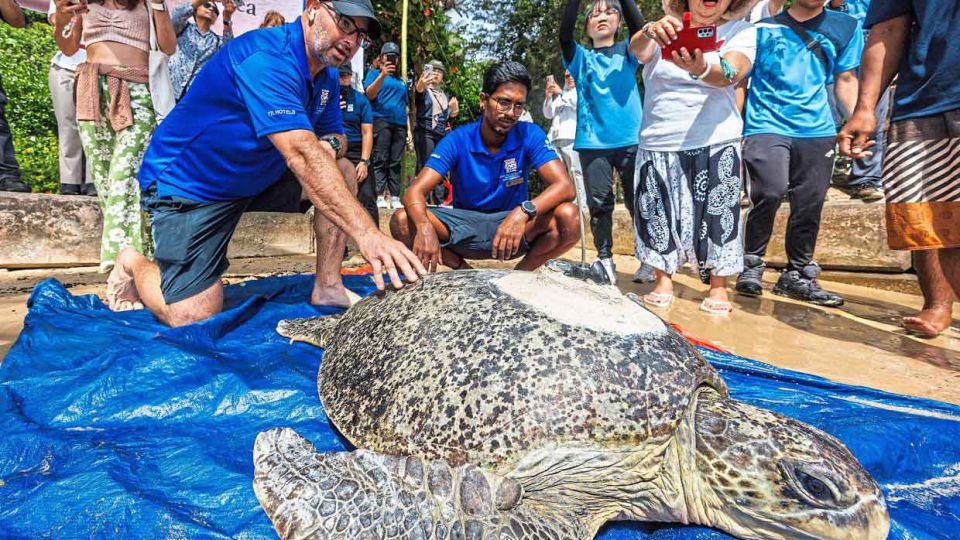November 20, 2025
KOTA KINABALU – It was a bittersweet farewell for two endangered sea turtles – Dato and Kutu – who were rescued from Sabah’s northern Kudat district in July, as they were released.
The over 30-year-old male turtle, Dato, who was rescued on July 10, and the juvenile Kutu found on July 30, were released in a simple ceremony at the Gaya Island Resort.
Conservators and resort staff who had been part of their recovery journey shed tears of sadness during their separation.
When he was found, Dato was dehydrated, severely constipated and had an eye infection, while Kutu had similar symptoms as well as a sea lice infestation.
When released, both turtles seemed to linger on the beach before slowly swimming away from the island, which they had called home for the past four months.
Marine biologists Scott Mayback and Dhivvian Tharmasegaran, who were the main caretakers for Dato and Kutu, explained that prior to the release, the two turtles were given a “test-swim” a few nights before.
“They adapted well back in the sea and were very active, so we knew it was time to let them return,” Dhivvian said, adding that when these two turtles were first surrendered to them, they were kept in separate tanks.
Director of Conservation Justin Juhun said when they get cases of ill or trapped turtles, they always work with the Sabah Wildlife Department, other marine biologists and conservationists to heal and rehabilitate them.
“At this resort, there are actually many other marine, wildlife and environmental conservation initiatives being done,” he said.
A satellite geo tag was attached to Dato’s shell for conservationists to monitor for the next one to two years, until it falls off on its own.
This tagging will enable conservationists to see the turtle’s movement, whether they return to where they were found (Kudat) and also allows them to learn more about turtle foraging areas.
Since Dato is an adult male, conservationists can also study his movements during the mating season.

